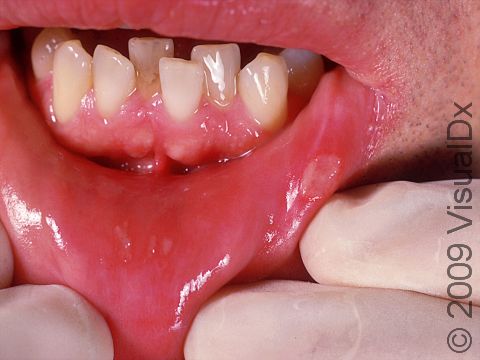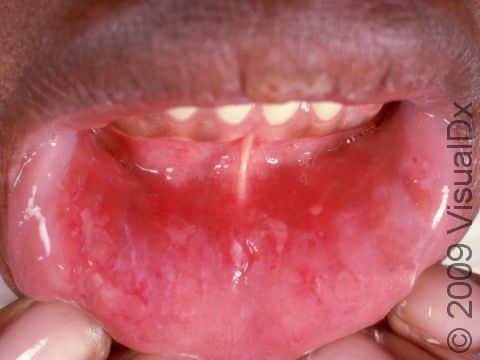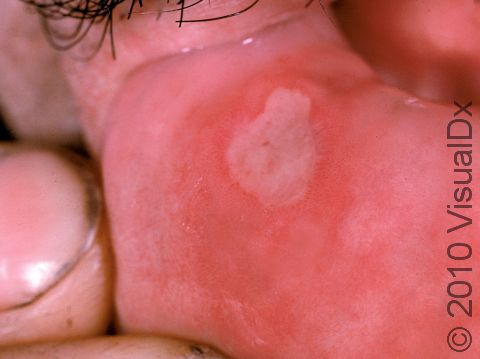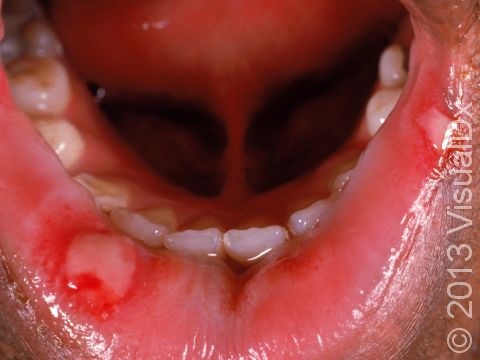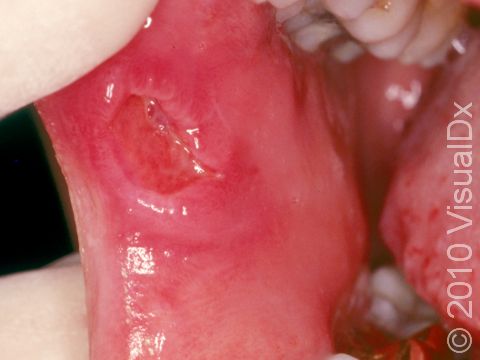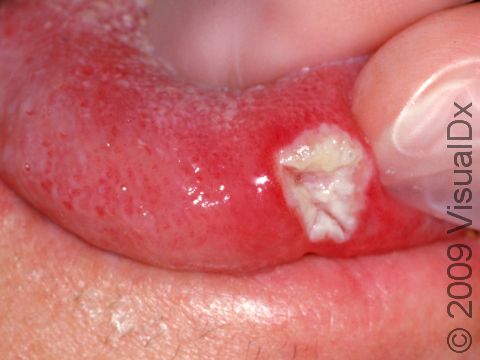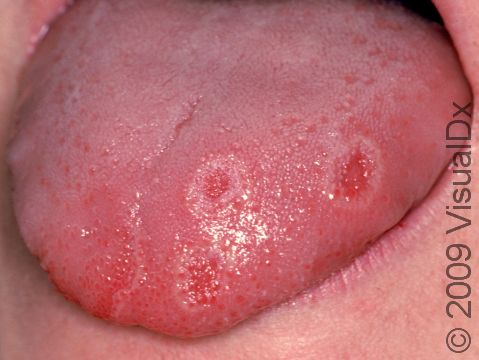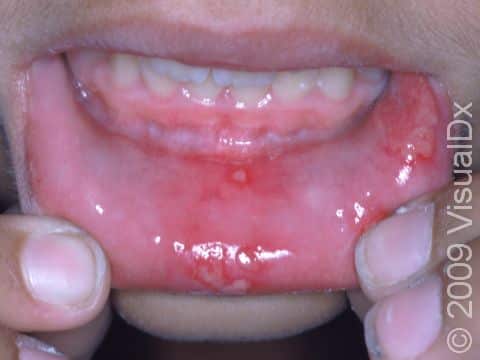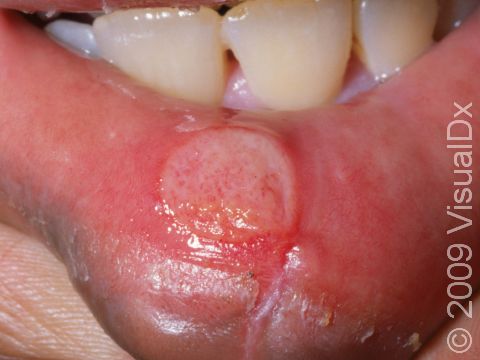Canker Sore (Aphthous Ulcer)
Canker sores (aphthous ulcers), or aphthae, are the most common cause of periodic (recurring) ulcers inside the mouth and genital linings (mucous membrane surfaces). Their cause is unknown, but stress, lack of sleep, trauma, and perhaps some vitamin deficiencies, toothpastes, and foods can make the condition worse. Some people with anemia and other medical conditions that weaken the immune system may be more likely to develop canker sores.
There are 3 types of canker sore:
- Minor aphthae (80% of cases)
- Major aphthae (Sutton disease, approximately 10% of cases)
- Herpetiform aphthae (10% of cases)
Minor aphthae heal within 1–2 weeks.
Major aphthae are extremely painful, last from 2–4 weeks, and generally cause scars after they heal.
Herpetiform aphthae progress in a way that is similar to minor aphthous ulcers.
Who's At Risk?
Canker sores affect approximately 25% of the general population. They are more common in women, and they usually start to appear in children or teens.
People infected with HIV/AIDS are often severely affected with canker sores.
Signs & Symptoms
Minor aphthae are single or multiple lesions, 1.0 cm or less in diameter.
Major aphthae are deep ulcers greater than 2.0 cm in diameter.
Herpetiform aphthae appear as multiple ulcerations.
The most common locations of canker sores are inside the mouth or lips or on the tongue. The genitals may also be affected. The sores can have a white, gray, or yellow base.
Self-Care Guidelines
There is no cure for canker sores. Most heal in 1–2 weeks, but the following measures may help relieve the pain:
- Apply protective pastes to form a barrier over the sore.
- Apply local anesthetics (benzocaine, lidocaine) to help numb the area.
- Use antibacterial mouthwashes.
- Avoid products or foods that seem to trigger episodes.
- Maintain a good diet or take vitamins.
- Get enough sleep and reduce stress.
Treatments
Treatment with topical steroids or other medications applied to the affected area, to speed up healing of the lesions, can be used. These include:
- Topical calcineurin inhibitors (tacrolimus or pimecrolimus)
- Prednisone in severe cases
Other oral medications, dapsone and colchicine, may be used in more severe cases, when repeated outbreaks continue for years.
Visit Urgency
See your doctor if canker sores do not heal, occur frequently, or if you have extreme discomfort or pain.
Trusted Links
References
Bolognia, Jean L., ed. Dermatology, pp.419, 1087. New York: Mosby, 2003.
Freedberg, Irwin M., ed. Fitzpatrick’s Dermatology in General Medicine. 6th ed. pp.1115-1116, 1098-1099, 2360, 2467. New York: McGraw-Hill, 2003.
Last modified on October 10th, 2022 at 4:18 pm

Not sure what to look for?
Try our new Rash and Skin Condition Finder
